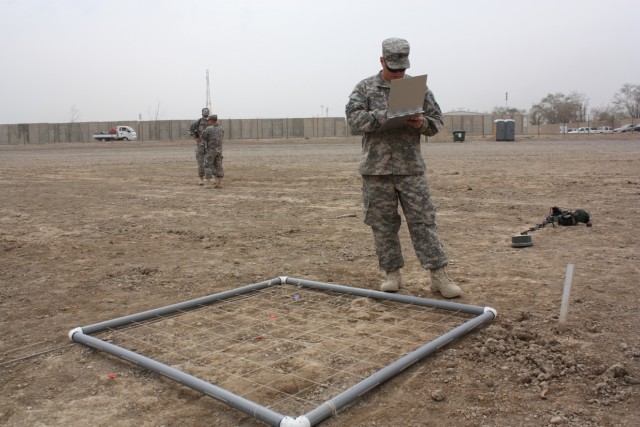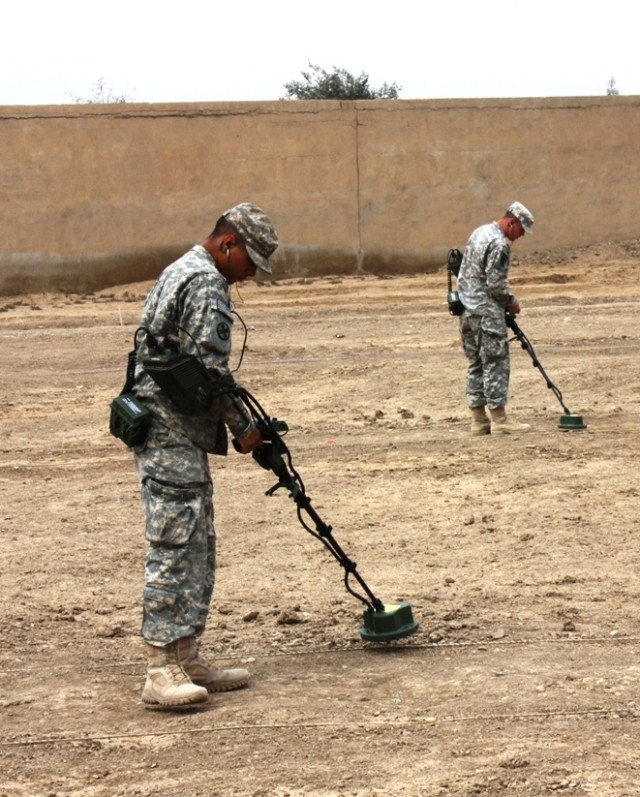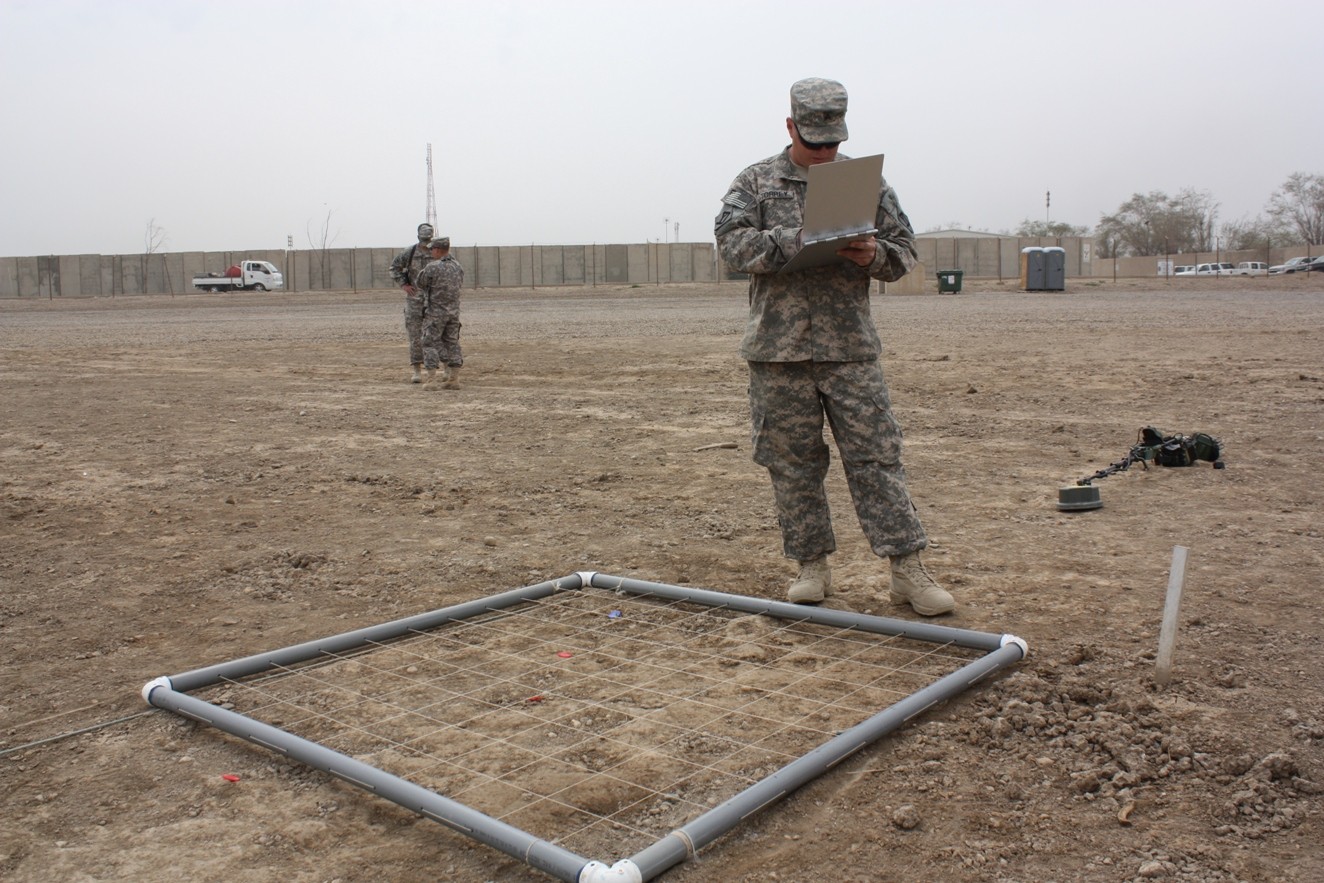By Spc. Brian Johnson
1434th Eng. Co., 16th Eng. Bde., USD-C
BAGHDAD - Training to maintain proficiency, with tools designed to accomplish the mission, does not stop when Soldiers enter a theater of war; Soldiers must continue to practice, rehearse and train on all of the equipment that makes them successful by keeping them safe.
Soldiers from 1192nd Engineer Company recently took part in important training to refresh and maintain their skills in mine detection. The five-day course, offered by the U.S. Army Engineer School located on the Victory Base Complex, is conducted on a regular basis and teaches Soldiers mine identification in both daytime and nighttime environments. Soldiers must be able to identify all the mines presented during the course in order to pass.
"This course is all about one thing: saving lives," explained retired Army Sgt. 1st Class Mark Blackburn, from Burtran, Mo., a course instructor. "I am trying to teach Soldiers how to stay alive in a mine situation."
According to Blackburn, the possibility of encountering a minefield still exists, recalling a recent report from the Helmand province in Afghanistan where NATO forces continue to breech minefields during offensives against the Taliban.
The course was taught by civilian contractors, as well as a fellow Soldier, Staff Sgt. Timothy Torrey, a member of Headquarters Support Company, 101st Eng. Bn.
According to Torrey, the mine detector the Soldiers are learning to use during this course is more accurate than previous models.
"You get tones and beeps instead of a constant tone," said Torrey. "It allows for a more accurate determination of mines."
The training lanes that the Soldiers must clear have an unspecified number of practice mines. Soldiers are required to find the center of the mine. Making the task more challenging is the fact that the mines they may encounter can be as small as a poker chip or as large as 13 inches,
"It gets people used to looking for different mine types," explained Torrey.
At the end of the five-day course, Blackburn feels very strongly that if a Soldier does not have a firm grasp on the mine detector, he does not allow Soldiers to graduate, even if they have passed the end-of-course exam.
"When I sign that certificate saying that [the] Soldier is certified in this piece of equipment, I am saying that I will go out in that minefield with them, and I have the confidence in them," explained Blackburn.
In Blackburn's opinion, Iraq and Afghanistan are the best places to train a Soldier on how to properly use a mine detector.
"Mine detecting is not a lost art. Mines are still used in wars. If a Soldier screws up, because they are not sure about this equipment, someone is going to get hurt or killed," said Blackburn.




Social Sharing